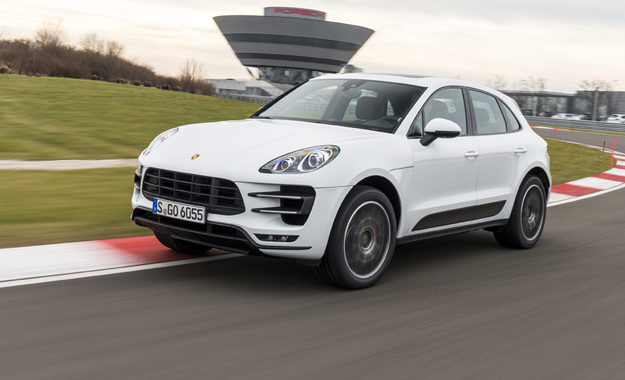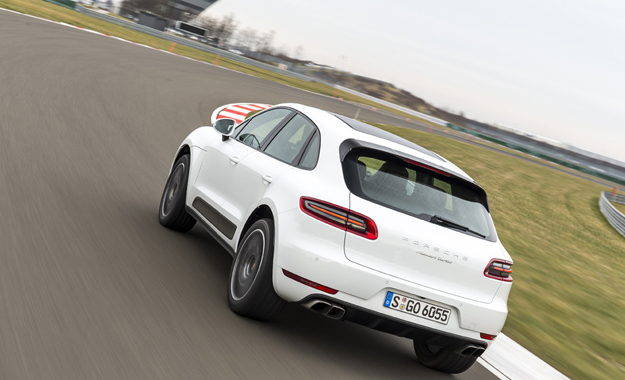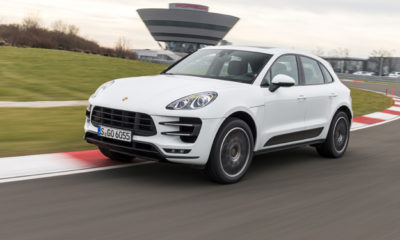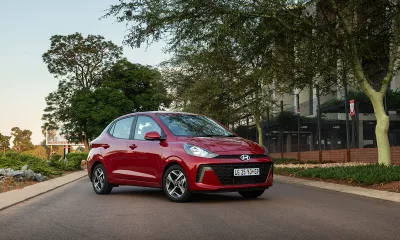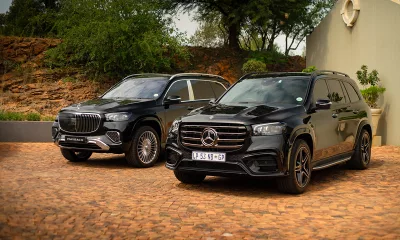LEIPZIG, GERMANY – The official press release for Porsche’s Macan opens with the wholly unambiguous statement: “The sportscar among compact SUVs”. One engineer I spoke to at the launch that was held at Porsche’s deeply impressive Leipzig factory (500 million euro was recently spent to ready it for Macan production) went as far as to proclaim the Macan the “911 of SUVs”.
We’ve heard it all before. The Zuffenhausen manufacturer’s own Cayenne is supposedly a sporty SUV; Land Rover claims the same for the Range Rover Sport and Evoque; every BMW X-something allegedly drives like a Touring while seating five in comfort. But it’s never true, is it? They might, in various ways, lightly tweak the laws of physics, but there’s no escaping the fact that the Cayenne, Evoque et al are heavy SUVs that roll in corners, dive under braking and squat when the accelerator pedal is floored.
The Macan is different, however. On the billiard-smooth roads of Leipzig and the purpose-built racetrack at the factory (a scary place, let me tell you; the corners replicate some of the most fearsome ones of various famous tracks, including Laguna Seca’s Corkscrew), it drove like a large hatchback with a higher centre of gravity. From the perfectly weighted electro-mechanical steering (light and direct) to the vice-like body control, potent engines and brakes, and flawless seven-speed PDK transmission, dynamically I couldn’t fault any one of the three different versions that will be available from the local launch in June.
Under the massive (it opens from just above the wheels and leaves the LED-equipped headlamps behind) aluminium bonnet resides one of three engines. The range kicks off with the smooth 3,0-litre turbodiesel from the Cayenne, here tuned to deliver 190 kW and 580 N.m. It sprints to 100 km/h in 6,3 seconds and tops out at 230 km/h. Why not the biturbo-diesel from the Audi SQ5 you may ask? Porsche says the singleturbo-unit is perfectly sufficient. I’d wager it’d encroach too much on the performance of the next two models, the S and Turbo. And perhaps the mother company instructed Porsche not to make use of the SQ5 engine, for there would then be no rational reason to purchase the Audi.
The Porsche Macan S boasts the new biturbo 3,0-litre petrol from the Panamera. It develops 250 kW and 460 N.m from a lowly 1 450 r/min all the way through to 5 000, has a creamy delivery and a nice rasp to the exhaust sound. 100 km/h comes up in a scant 5,4 seconds and 254 km/h is the top speed. It’s my favourite. Almost as quick as the Turbo, it uses less fuel and will cost a few hundred grand less than the flagship.
Capping the range is the Macan Turbo. Its 3,6-litre V6 also boasts two turbos that help it produce 294 kW and 550 N.m, enough for 100 km/h to flash by in 4,8 seconds. It’s a workmanlike engine that isn’t sonorous, but feels extremely strong in the mid-range.
The S Diesel and S run on 18-inch wheels as standard, the Turbo on 19s, and all models can be equipped with 21-inch wheels enveloped by massive 295 /35 R21 tyres. Another interesting option is air suspension – which all the models on the launch had – that can increase the ground clearance from 198 mm to 230. It provided for a very comfy ride on the short off-road course we tackled (which the Macan handled with aplomb, but admittedly it was mild enough that my long-term Alfa Romeo Mito would have been able to negotiate some of the obstacles…). Germany’s roads, as mentioned, are in an incredible condition, so I won’t make a definitive statement on the ride quality, but the few scars we found were ridden well. Whether it will retain this compliance on the standard steel springs on South African roads we’ll have to find out when we get our hands on a test vehicle.
So, the Macan does “sporty” better than any other SUV. But, at prices that I predict will kick off at about R800 000, luxury has to weigh as heavily in its sets of attributes. Again, it doesn’t disappoint. The cabin lacks flair, granted; if you’ve sat in any current-generation Porsche, you’d know exactly how every button feels and each interface looks. It’s not a criticism per se, but some design bravura would have been welcome. That said, quality is mostly brilliant (there are one or two bits that don’t shout premium quite as loudly, such as the sticky lid for the storage compartment in the centre console), space front to rear is as good as can be expected in this size class and the boot, at 500 dm3, is large. Porsche persists with a smallish navigation screen when other manufacturers’ systems are becoming ever larger, but it works well. The button count is very high, but the controls are marked and sited clearly.
Porsche predicts that, annually, 50 000 Macans will find homes compared with the 80 000-odd Cayennes it sells. I think the company is being unnecessarily conservative. If this first drive is any indication – as well as the fact that all Macans until January 2015 have been sold – Porsche has a winner on its hands. It’ll undoubtedly overtake the Cayenne as Zuffenhausen’s biggest seller, and capture the imagination of sportscar enthusiasts who’ve been yearning for that elusive sports SUV. It’s simply damn good.
*Specifications:
Model: Porsche Macan S
Engine: 3,0-litre, V6, biturbo-petrol
Power: 250 kW between 5 500 and 6 500 r/min
Torque: 460 N.m between 1 450 and 5 000
0-100 km/h: 5,4 seconds
Top speed: 254 km/h
Fuel consumption: 9,0 L/100 km
CO2: 212 g/km
Est price: R850 000
Maintenance plan: 5 years/unlimited km
Service intervals: determined by onboard computer
*According to Porsche
